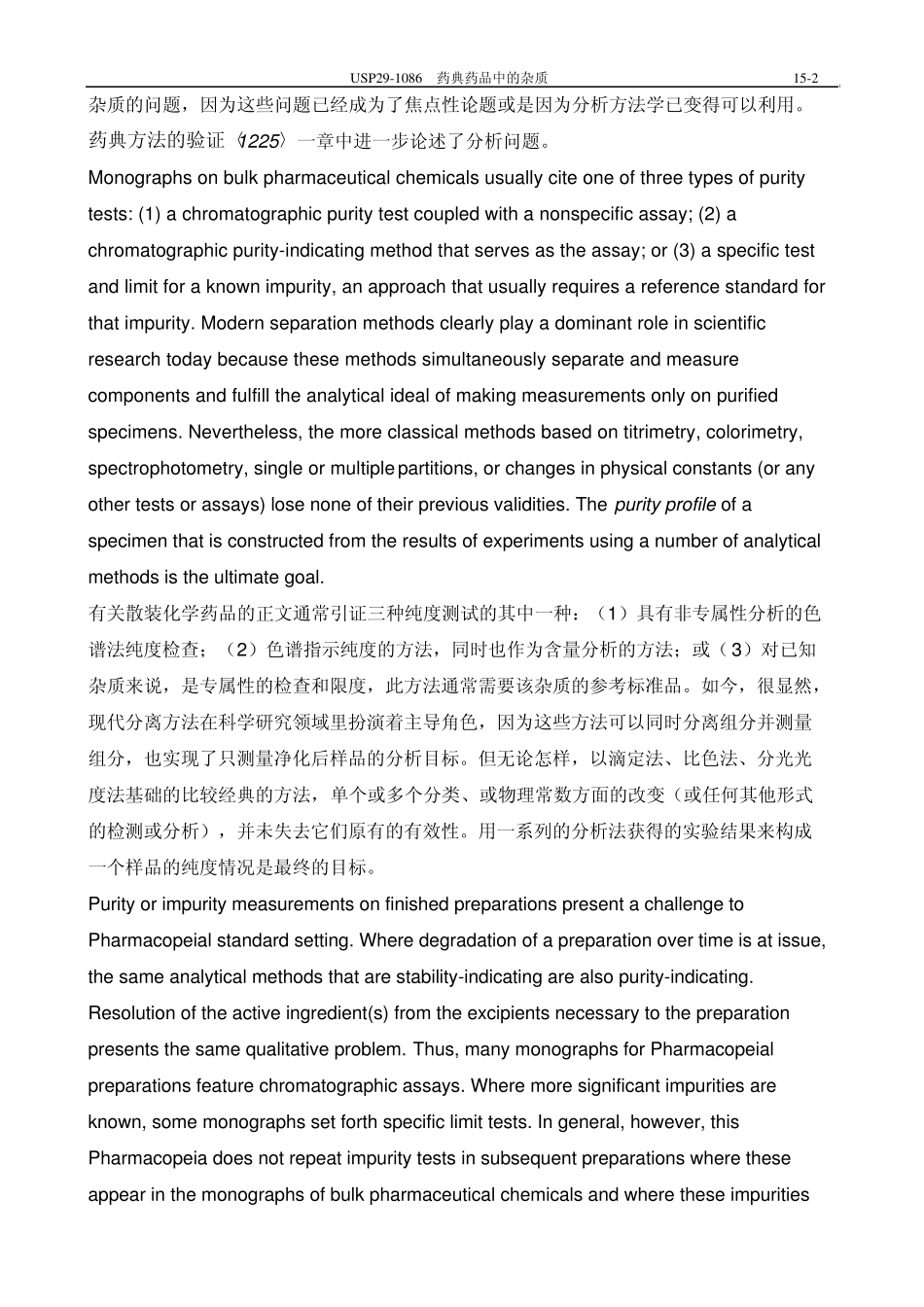U SP29-1086 药典药品中的杂质 王璐译,陈玉霞校 <1086> IMPURITIES IN OFFICIAL ARTICLES <1086>药典药品中的杂质 Concepts about purity change with time and are inseparable from developments in analytical chemistry. If a material previously considered to be pure can be resolved into more than one component, that material can be redefined into new terms of purity and impurity. Inorganic, organic, biochemical, isomeric, or polymeric components can all be considered impurities. Microbiological species or strains are sometimes described in similar terms of resolving into more than one component. 关于纯度的概念随时间的改变而改变,并且与分析化学的发展息息相关。如果之前被认为是纯净的物料可以被分解成不只一个组分,那么那个物料可重新定义为纯度和杂质的新术语。无机的、有机的、生物化学的、同质异构或聚合组分可以全部看作是杂质。微生物种类或菌种如果可以分解为不只一个组分时,用同样的术语来描述。 Communications about compendial articles may be improved by including in this Pharmacopeia the definitions of terms and the contexts in which these terms are used. (See Definitions below.) There has been much activity and discussion in recent years about term definition. Certain industry-wide concerns about terminology and context deserve widespread publication and ready retrievability and are included here. (See Industrial Concepts below.) See Foreign Substances and Impurities, in the section Tests and Assays, under General Notices and Requirements, as well as the recently adopted general chapter, Ordinary Impurities 466. Some other general chapters added over the years have also addressed topics of purity or impurity as these have come into focus or as analytical methodology has become available. Analytical aspects are enlarged upon in the chapter Validation of Compendial Methods ...


